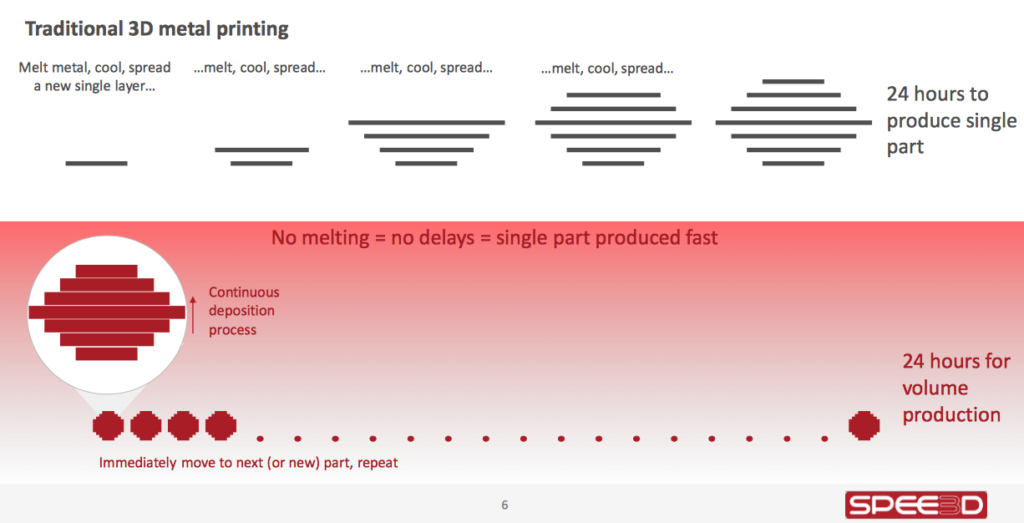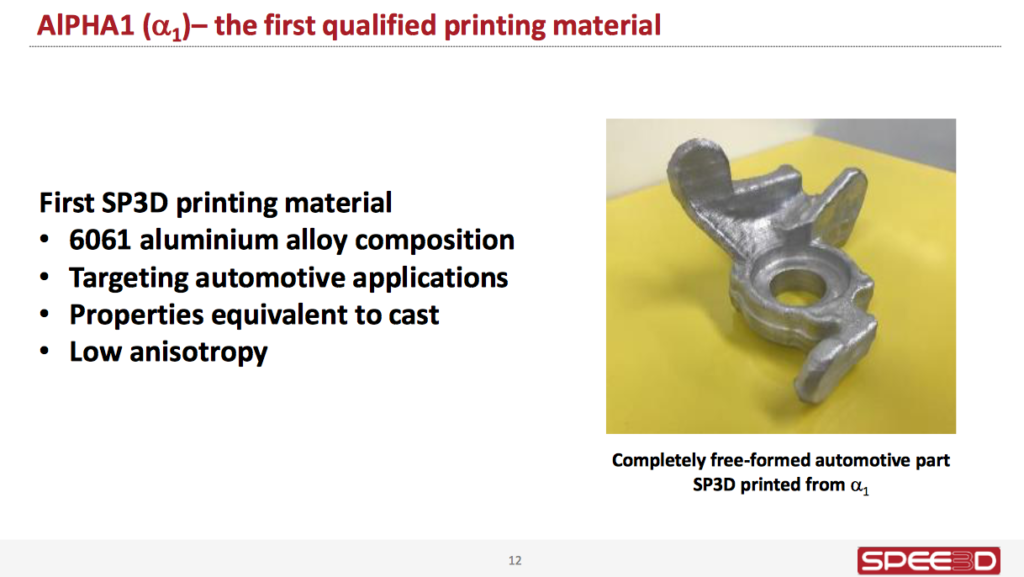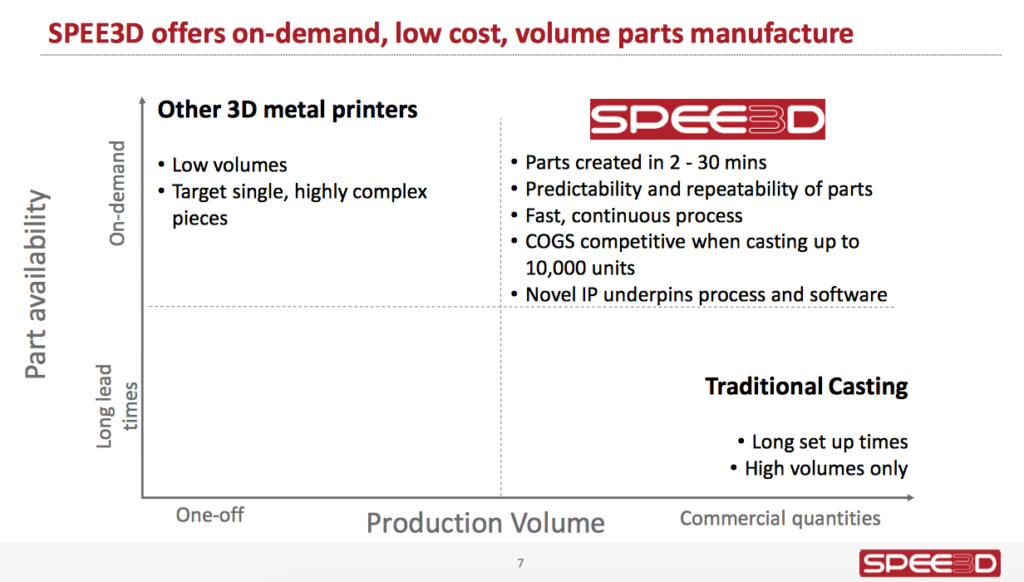Charles Darwin University (CDU) in Northern Territory (NT), Australia, has been granted $400,000 AUD ($313,000 USD) by the government to buy a LightSpEE3D metal 3D printer from university spin-off company SPEE3D.
As one of Australia’s 6 Innovative Research Universities, CDU will investigate possible applications for the LightSPEE3D’s cold spray technology, seeking potential in high-value metal machining industries like automotive and aerospace.
“1000 x faster” than other metal 3D printing methods
The cold spray technology invented by Steven Camilleri and Byron Kennedy can reportedly 3D print metals up to 1000 times faster than existing powder bed fusion and wire based methods.

The build plate inside a LightSPEE3D is attached to a robotic arm. In a reverse of typical 3D printers, the nozzle is installed beneath the print bed. From here, the nozzle sprays metal powder onto the robot-held substrate.

When a model is loaded into the 3D printer, the robot arm uses its ability to move along 5 axis to build metal, layer-by-layer, into the desired shape.
The result is a near net shape part to be polished and machined into a finished component for the end-user.

By contrast to other methods of metal 3D printing though, cold spraying does not allow engineers to specify the complex internal geometry seen in powder bed fusion 3D printing.
Saving time and money
Speaking to ABC News Australia, co-inventor Steven Camilleri calls the machine the “first of it’s kind” in 3D printing, explaining the time advantage it has over traditional types of manufacturing.
Camilleri explains,“We’ve got a part that we did for an automotive supplier and we were able to bring the 3D print time down from about 100 to 200 hours to about 20 minutes.” The time saved is also proportionate to total expenditure, with the 3D printed part costing around $30 USD, and its machined equivalent costing $3,000 – $5,000 USD.
“We believe we’ve got a process that suits manufacturing better than some of the existing processes for metal manufacturing” he adds, “It’s got to do with convenience so rather than having many, many months and weeks of leave time for parts, we can bring that right down to essentially instantaneous.”

New technologies and the university testbed
New York’s Vader Systems, LLC. are also working on a novel 3D printing method.
Like SPEE3D Vader Systems are also working closely with academia on their innovative systems. Applications for the MagnetoJet liquid metal 3D printing technology are the subject of studyt by researchers at the Rochester Institute of Technology (RIT).
Incidentally RIT also helped optimize LightSPEE3D’s touch based user interface.
Cold spraying technology is in development by a number of other initiatives including a project at the University of Akron, Ohio. In collaboration with the local Airborne Maintenance & Engineering Services, Akron are using a cold spray technique to repair damaged airplane parts, and is seeking Federal Aviation Administration (FAA) approval for the method.
The European Space Agency has also paid significant attention to the development of cold spray technology, awarding Trinity College Dublin €500k for the purpose in January 2015.
For all the latest 3D printing news, subscribe to the most widely read newsletter in the 3D printing industry, follow us on twitter and like us on Facebook.
Featured image: The LightSPEE3D metal 3D printer. Image via SPEE3D.



